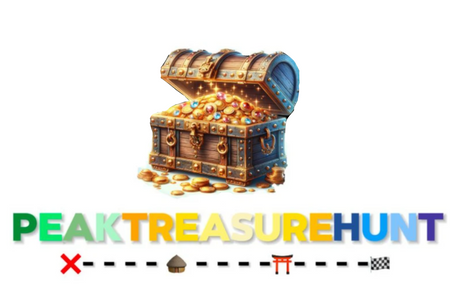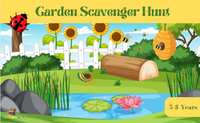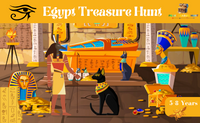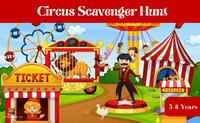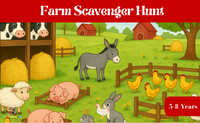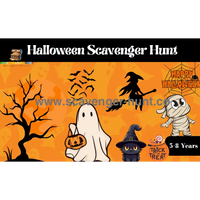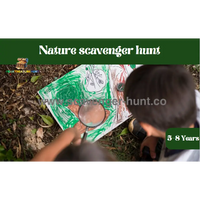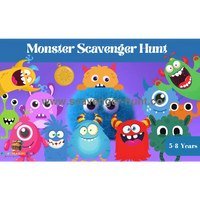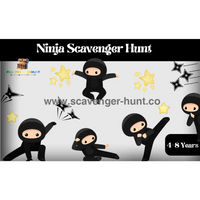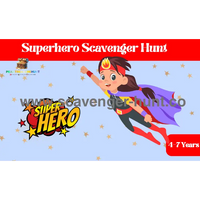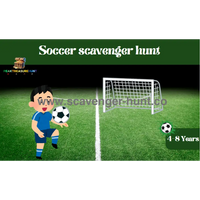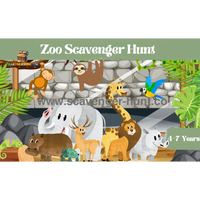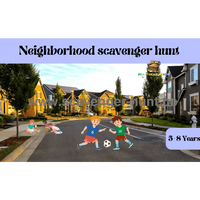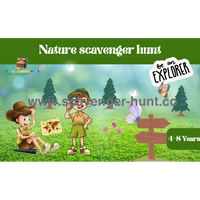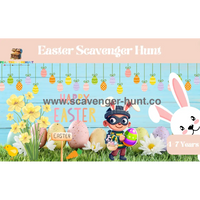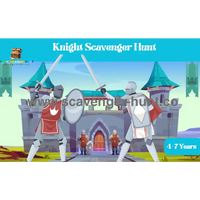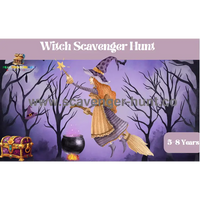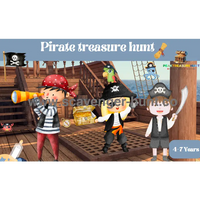The Ultimate Guide to Scavenger Hunts: Tips, Ideas, and Safety
Scavenger hunts are an exhilarating way to challenge the mind, foster teamwork, and have loads of fun. Whether you're organizing a hunt for a family gathering, a team-building exercise, or a special event, a well-planned scavenger hunt can provide a memorable experience for all participants. In this guide, we'll cover everything from planning tips to creative ideas, and importantly, safety precautions to ensure everyone has a great time.
Planning Your Scavenger Hunt
Planning a successful scavenger hunt involves careful consideration of several key elements to ensure that the event is enjoyable, engaging, and well-organized. Here’s a more detailed look at each step in the planning process:
1. Define the Objective
-
Determine the Purpose: Start by clarifying the primary goal of the scavenger hunt. Is it intended to be a competitive event with teams racing against each other, a learning experience that incorporates educational elements, or simply a fun and recreational activity? Knowing the objective will help shape the format and structure of the hunt.
-
Identify the Audience: Consider the age, interests, and physical abilities of your participants. For example, a scavenger hunt for children might focus on simple tasks and playful challenges, while one for adults might include more complex puzzles and strategic elements.
-
Establish Success Criteria: Define what success looks like for your event. Is it completing the hunt within a certain time frame, solving a final puzzle, or simply having fun? Clear success criteria will help in evaluating the event's effectiveness and planning future hunts.
2. Choose a Theme
-
Select an Engaging Theme: Choose a theme that will captivate your participants. Themes could include adventures like "Pirate Treasure Hunt," "Mystery Detective," "Space Expedition," or "Historical Quest." The theme sets the tone for the hunt and can make the event more immersive.
-
Incorporate Theme Elements: Ensure that the theme is reflected in the clues, tasks, and decorations. For example, a "Wizardry Quest" theme might include magical clues, spell-related tasks, and wand props, while a "Wildlife Safari" theme could feature animal tracking and nature-related challenges.
-
Customize for Your Group: Tailor the theme to the interests of your participants. For a children’s party, you might choose a whimsical theme like "Fairy Tale Adventure," while a corporate team-building event could benefit from a more professional theme like "Escape Room Challenge."


3. Create a List of Items or Tasks
-
Decide on Hunt Format: Determine whether participants will be searching for physical items, completing tasks, or both. For a more traditional hunt, compile a list of items to be found. For a task-based hunt, create engaging and varied challenges that align with your theme.
-
Ensure Safety and Feasibility: Make sure that all items and tasks are safe and appropriate for the participants’ age and abilities. For physical items, ensure they are easy to handle and won’t pose any risks. For tasks, ensure they are achievable within the given time frame.
-
Diverse Challenge Types: Include a mix of challenges to keep the hunt interesting. Combine straightforward item searches with creative tasks like solving riddles, completing puzzles, or performing fun activities related to the theme.
-
Test the List: Before finalizing, test the list of items or tasks to ensure they work well in practice and adjust as needed based on feedback or observations.
4. Set the Rules
-
Outline Clear Rules: Develop a comprehensive set of rules to guide the scavenger hunt. Include details on how to find and claim items or complete tasks, any time limits, and the process for submitting completed tasks or items.
-
Define Boundaries: Clearly define the boundaries of the scavenger hunt area to ensure participants do not wander into unsafe or unauthorized areas. Use markers or maps to make these boundaries clear.
-
Establish Fairness Guidelines: Set rules to ensure fairness, such as how disputes will be resolved and how ties will be broken. Make sure that all participants understand and agree to these rules before starting the hunt.
-
Explain Safety Protocols: Include safety-related rules, such as staying within designated areas, respecting the environment, and reporting any accidents or issues immediately.
5. Prepare the Materials
-
Gather Necessary Supplies: Collect all the materials needed for the scavenger hunt, including clue cards, maps, item lists, and any props related to the theme. Ensure everything is ready and in good condition before the event begins.
-
Prepare Technology: If your scavenger hunt involves technology, such as apps or QR codes, ensure that all participants are familiar with the tools and know how to use them. Provide any necessary instructions or tutorials.
-
Organize and Distribute Materials: Organize materials in a way that makes them easy to distribute on the day of the event. Have a plan for how clues and tasks will be handed out and how completed tasks or found items will be collected or verified.
-
Create Backup Plans: Prepare for potential issues by having backup materials and solutions. For example, have extra copies of clues or a contingency plan if technology fails.
By carefully considering these aspects of planning, you can create a well-organized and enjoyable scavenger hunt that meets your objectives and provides a memorable experience for all participants. Happy planning!
Creative Scavenger Hunt Ideas
1. Themed Hunts
A themed scavenger hunt adds an extra layer of excitement and immersion by incorporating a specific theme that guides the entire event. This approach can transform a simple hunt into a captivating adventure that resonates with participants’ interests and imaginations. Here’s how to create a memorable themed scavenger hunt:
1. Choose a Compelling Theme
-
Match the Interests: Select a theme that aligns with the interests and age group of your participants. Popular themes include “Pirate Adventure,” “Superhero Quest,” “Space Exploration,” “Mystery Detective,” “Medieval Quest,” and “Fairy Tale Fantasy.” The right theme can enhance engagement and make the scavenger hunt more enjoyable.
-
Consider the Setting: Tailor the theme to the environment where the scavenger hunt will take place. For instance, a “Nature Exploration” theme works well in a park or forest, while a “City Adventure” could be ideal for an urban setting.
-
Incorporate Seasonal Elements: Align the theme with seasonal events or holidays for added relevance. For example, a “Haunted Halloween Hunt” or “Winter Wonderland Quest” can fit well with seasonal celebrations.
2. Design Themed Clues and Tasks
-
Create Themed Clues: Develop clues and puzzles that reflect the theme. For a “Pirate Adventure,” clues might involve treasure maps and riddles about pirate lore. For a “Superhero Quest,” tasks could include solving problems or completing missions that align with superhero abilities.
-
Use Themed Props: Integrate props and decorations that enhance the theme. For a “Medieval Quest,” use items like faux swords, shields, and medieval banners. For a “Space Exploration” theme, incorporate space-themed items such as alien figurines and astronaut gear.
-
Include Themed Challenges: Design tasks and challenges that fit the theme. For a “Mystery Detective” hunt, participants might need to solve a fictional crime using clues and evidence. For a “Fairy Tale Fantasy” hunt, challenges could involve reenacting scenes from classic fairy tales or finding characters from the stories.
3. Enhance Immersion with Themed Decorations
-
Decorate the Area: Transform the hunt area with decorations that match the theme. For a “Pirate Adventure,” you might use pirate flags, treasure chests, and nautical decorations. For a “Superhero Quest,” decorate with superhero posters, masks, and capes.
-
Dress the Part: Encourage participants to dress according to the theme. For a “Medieval Quest,” participants could wear costumes like knights or royalty. For a “Space Exploration,” encourage costumes like astronauts or aliens.
-
Create Themed Invitations and Materials: Use themed designs for invitations, clue cards, and other materials. For a “Fairy Tale Fantasy” theme, invitations might feature enchanted castles and mythical creatures.
4. Plan Themed Prizes and Rewards
-
Award Themed Prizes: Choose prizes that align with the theme. For a “Pirate Adventure,” consider pirate-themed toys or gold coins. For a “Superhero Quest,” rewards might include superhero action figures or capes.
-
Recognize Achievements: Offer awards or recognition for participants who excel in various aspects of the theme. This could include categories like “Best Pirate Costume,” “Top Detective,” or “Most Creative Space Explorer.”
-
Celebrate the Theme: Conclude the scavenger hunt with a themed celebration or closing ceremony. This could include themed music, snacks, or a recap of the adventure with themed props or activities.
5. Integrate Themed Storylines
-
Develop a Storyline: Create a storyline that ties the theme together and adds depth to the scavenger hunt. For a “Mystery Detective” theme, craft a narrative about solving a fictional crime. For a “Fairy Tale Fantasy,” create a story about rescuing a character or finding a magical artifact.
-
Use Story Elements in Clues: Incorporate elements of the storyline into the clues and tasks. This adds an extra layer of engagement and helps participants feel like they are part of the adventure.
-
Provide Context: At the start of the hunt, give participants an overview of the storyline and how it relates to the tasks and clues they will encounter. This helps immerse them in the theme and sets the stage for the adventure.
By carefully selecting and implementing a theme, you can transform your scavenger hunt into a captivating and immersive experience that appeals to participants of all ages. Whether you’re exploring pirate lore, superhero feats, or fairy tale adventures, a well-executed theme adds excitement and depth to the scavenger hunt.


2. Photo Scavenger Hunt
A photo scavenger hunt is an engaging variation where participants capture images of specific items or scenarios instead of physically collecting them. This format works well for larger areas or when you want to minimize the handling of physical objects.
-
Create a List of Photo Targets: Develop a list of items, locations, or scenarios that participants must photograph. This could include landmarks, specific objects, or even actions like "a group of people making a funny face."
-
Incorporate Creative Challenges: Make the hunt more engaging by adding creative challenges. For example, ask participants to take photos in artistic styles, like black-and-white or using specific filters, or capture items from unusual angles.
-
Use a Shared Platform: To streamline the process, use a shared platform where participants can upload their photos. This could be a private social media group, a photo-sharing app, or a dedicated event website.
-
Set Time Limits and Rules: Establish clear rules about photo submissions, such as what qualifies as a valid photo and how long participants have to complete the hunt. Ensure that all participants understand the rules to avoid confusion.
-
Review and Award: After the hunt, review the photos and award points or prizes based on creativity, accuracy, and adherence to the theme. This adds a competitive element and recognizes standout efforts.
3. Digital Scavenger Hunt
A digital scavenger hunt leverages technology to provide clues and tasks through apps or QR codes. This high-tech approach can be particularly engaging for tech-savvy groups and offers a modern twist on the traditional hunt.
-
Select Appropriate Technology: Choose an app or platform that fits your needs. Options might include scavenger hunt apps with built-in features for tracking progress, or QR code generators that link to clues and tasks.
-
Design Interactive Clues: Create digital clues that can be accessed through smartphones or tablets. This could involve solving online puzzles, watching video clues, or using GPS features to locate virtual checkpoints.
-
Incorporate Multimedia: Enhance the experience by using multimedia elements. Include video clips, audio recordings, or interactive maps to make the scavenger hunt more dynamic and immersive.
-
Test the Technology: Before the event, thoroughly test all technology to ensure it works as expected. Check that all participants are comfortable with the technology and have access to necessary devices.
-
Track Progress and Provide Feedback: Use digital tools to track participants’ progress in real-time and provide instant feedback or hints if needed. This can help maintain engagement and ensure the event runs smoothly.
4. Nature Hunt
A nature hunt is ideal for outdoor settings and focuses on finding and identifying various natural elements. This type of scavenger hunt is educational and promotes an appreciation for the environment.
-
Create a Nature-Themed List: Develop a list of natural items or features to be found, such as specific types of plants, rocks, animals, or natural landmarks. Include images or descriptions to help participants identify them.
-
Incorporate Educational Elements: Enhance the hunt with educational components. Provide information about each item or feature, such as interesting facts about local wildlife or plant species.
-
Encourage Respect for Nature: Emphasize the importance of respecting the environment. Ensure participants understand the rules for observing wildlife and handling plants without causing harm.
-
Use Guides and Resources: Provide participants with field guides or apps that can help them identify and learn about the natural elements they encounter. This adds an informative aspect to the scavenger hunt.
-
Monitor and Support: Have guides or leaders available to assist participants with identification and to ensure they follow environmental guidelines. This helps maintain safety and enriches the learning experience.
5. Puzzle Hunt
A puzzle hunt combines the excitement of a scavenger hunt with the challenge of solving puzzles or riddles. Each clue in the hunt is a puzzle that leads to the next clue, adding an intellectual challenge to the event.
-
Design Challenging Puzzles: Create a series of puzzles or riddles that participants must solve to progress through the hunt. These can range from word games and logic puzzles to cryptic clues and brain teasers.
-
Integrate Clues into the Theme: Ensure that each puzzle aligns with the overall theme of the scavenger hunt. For example, a “spy” theme could include code-breaking and cipher puzzles, while a “historical” theme might involve riddles about famous events or figures.
-
Ensure Progression: Structure the puzzles so that each solution leads logically to the next clue. This helps maintain a coherent flow and keeps participants engaged.
-
Provide Hints if Needed: Offer hints or partial solutions if participants are struggling with a particular puzzle. This prevents frustration and keeps the hunt enjoyable.
-
Review and Reward: At the end of the hunt, review the completed puzzles and offer rewards based on the participants’ problem-solving skills and creativity. Recognize those who excelled in both solving the puzzles and completing the hunt.
By exploring these diverse scavenger hunt ideas, you can create a unique and memorable experience tailored to the interests and abilities of your participants. Whether you choose a photo hunt, digital hunt, nature exploration, or puzzle challenge, each format offers its own set of advantages and excitement.
Safety Tips for Scavenger Hunts
Ensuring safety during a scavenger hunt is crucial for a positive experience. Here are some tips to keep everyone safe:
Choose a Safe Location
-
Assess the Environment: Opt for locations that are secure and suitable for the participants' age and capabilities. Parks, community centers, or large open spaces are ideal. Avoid areas with heavy traffic, unstable ground, or hazardous conditions.
-
Consider Accessibility: Ensure that the location is accessible for everyone, including those with mobility challenges. Check for obstacles like stairs or uneven surfaces that might pose a risk.
-
Weather Conditions: Plan the scavenger hunt considering weather conditions. Avoid scheduling outdoor hunts during extreme weather conditions like heavy rain, snow, or extreme heat, which could lead to accidents or discomfort.
Set Clear Boundaries
-
Define the Area: Clearly mark the boundaries of the scavenger hunt area using visible markers or signs. This helps participants stay within a safe zone and prevents them from wandering into potentially dangerous areas.
-
Use Maps: Provide participants with a map or a clear description of the boundaries. This is especially important if the hunt area is large or has multiple zones.
-
Inform Participants: Make sure all participants are aware of the boundaries before starting the hunt. Emphasize the importance of staying within the designated area.
Provide Proper Supervision
-
Adult Presence: Ensure that there are enough adults or responsible individuals to supervise the participants, particularly if they are children. Designate specific roles, such as team leaders or activity monitors, to help oversee the event.
-
Group Size: Keep the group size manageable. Smaller groups are easier to supervise and ensure that everyone is accounted for throughout the event.
-
Check-In Points: Set up regular check-in points where participants can confirm their location and report any issues. This helps ensure that everyone is safe and accounted for.
Prepare for Emergencies
-
First Aid Kit: Have a fully stocked first aid kit readily available at the event location. Include essentials like bandages, antiseptic wipes, and any necessary medications.
-
Emergency Contacts: Compile a list of emergency contacts and ensure that all supervisors are familiar with this information. This list should include local emergency services, medical facilities, and key contacts for participants.
-
Basic First Aid Knowledge: At least one person should be trained in basic first aid and CPR. This person should be easily identifiable to participants in case of an emergency.
-
Communication: Ensure that participants know who to contact in case of an emergency. Provide clear instructions on how to reach out for help if needed.
Communicate Rules Clearly
-
Detailed Instructions: Provide detailed instructions on the rules of the scavenger hunt, including any safety guidelines. Make sure these instructions are clear and understandable for all participants.
-
Environmental Respect: Emphasize the importance of respecting the environment and any private property. Participants should understand that they must not damage or disturb natural areas or trespass on private land.
-
Behavior Expectations: Set expectations for behavior, such as no running or roughhousing. Ensure that participants understand the importance of following these rules to avoid accidents.
-
Rule Briefing: Before the scavenger hunt begins, gather all participants to review the rules and safety guidelines. This ensures that everyone is aware of what is expected and can participate safely.
By incorporating these detailed safety tips, you can help ensure that your scavenger hunt is not only fun but also safe for all participants. Happy scavenging!
Safety Tips For Scavenger Hunts FAQ
What Are Some Safety Tips For Scavenger Hunts?
Ensuring safety during a scavenger hunt is paramount. Here are some key tips:
-
Choose a Safe Location: Opt for areas that are secure and appropriate for the participants’ age and abilities.
-
Set Clear Boundaries: Define the limits of the hunt area to prevent participants from entering unsafe zones.
-
Provide Supervision: Ensure adequate adult supervision, especially for younger participants.
-
Prepare for Emergencies: Have a first aid kit handy and make sure someone is trained in basic first aid.
-
Communicate Rules: Clearly explain all rules and safety guidelines to participants before the hunt begins.
How Do I Create an Exciting Scavenger Hunt Theme?
To create an exciting scavenger hunt theme, consider the interests and age group of the participants. Popular themes include treasure hunts, mystery adventures, and nature explorations. Customize the clues and tasks to fit the theme, and use props or costumes to enhance the experience.
What Types of Clues Work Best for Different Age Groups?
For younger participants, use straightforward clues with images or simple riddles. For older participants, incorporate more complex puzzles, riddles, or challenges. Adapt the difficulty level to ensure the hunt remains engaging and enjoyable for everyone.
How Can I Ensure Fair Play During the Scavenger Hunt?
To ensure fair play, clearly outline the rules and make sure all participants understand them. Implement rules about how items or tasks should be claimed and establish a fair method for resolving disputes. Keeping the hunt transparent and consistent helps maintain fairness.
What Should I Do if Someone Gets Lost or Injured?
Have a plan in place for such situations. Ensure all participants know who to contact in case of an emergency. Designate a team member as the point of contact for emergencies, and have a first aid kit readily available. Make sure that all participants are accounted for and stay in contact with each other throughout the hunt.
With these tips and ideas, you’re well on your way to organizing a memorable and safe scavenger hunt. Happy hunting!
Discover our Complete Scavenger Hunts Collection.


HOW TO PLAN A TREASURE HUNT FOR KIDS
